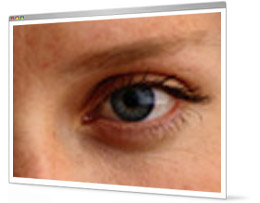My UPD8
You need to login before you download the free activities. You can register here.
- The Centre for Science Education
- The Association for Science Education
- Partners
- Part of ASE online
Bionic Vision

Type: Activity
Learning Strategy: Case study
Topic: Nervous system
When disease attacks your light sensing cells, there is no cure. You just go blind! But US researchers can now make blind eyes see again. A mini video camera captures the image, and electrodes in the eye stimulate the nerves to the brain. Students compare the bionic system with a normal eye and consider how much benefit the new system offers.
11-14 How Science Works:
4a. Students should be taught about the use of contemporary scientific and technological developments and their benefits, drawbacks and risks.
Published: 21st February 2007
Reviews & Comments: 4
Learning objectives
Students will understand how we see things and appreciate the limitations of artificial sense organs.
Try the activity
Please login to download activities
Curriculum link
How we see things.11 – 14(KS3)
Light QCA 8K
That we see non-luminous objects because light is reflected from them and enters our eyes; and that the path of light can be represented by rays.
GCSE specifications
Gateway Core Science
Module B1 Understanding Ourselves: Item B1d: Keeping In Touch
Describe the functions of the main parts of the eye: cornea - refracts light; iris - controls how much light enters pupil; lens - focuses light on to retina; retina - contains light receptors; optic nerve – carries impulses to the brain. Describe the pathway of light through the eyeball, being refracted by the cornea and lens.
Running the activity
Page 1 sets the context and gives students a chance to consider how having impaired eyesight would effect their lives.
Page 2 gets students to analyse diagrams to learn how our eyes work and how the bionic eye stimulates the optic nerve. The table on the downloadable file has suggested answers.
Page 3 sets an extension activity. Students use 10 by10 grids to plot what two different scenes would look like using the best retinal implants currently available. This gives them an opportunity to revisit their original assumptions and reassess the benefits of the technology.
Possible extension
Use the View/Zoom/Show grid function in Paint to illustrate how pictures are composed of individual pixels.
Teacher's Notes
Students might ask why more electrodes are not used. Our light sensing cells communicate with sensory nerves in the retina using chemical signals, but current implants stimulate the nerve cells electrically. If an effective electrical signal was delivered to a single cell, it would be damaged. To minimise damage it is spread over a patch of cells. Even users of the earliest implants, which stimulated 4 by 4 patches of cells, report significant benefits because they can detect obstacles and sense movement.
Web links
News links
- BBC
- The original news story.
- Interesting thing of the day
- An outline of the various artificial vision systems in development.
- Nasa
- Detail about a more advanced system under development.
- kidshealth.org
- How normal eyes work
Reviews & Comments
Write your online review to share your feedback and classroom tips with other teachers. How well does it work, how engaging is it, how did you use it, and how could it be improved?
Bionic Vision review
Mar 18th, 2009

Reviewer: jack ball
Bionic vision
Jun 7th, 2008

I used this with year 8 mixed ability groups and it worked really well, all pupils gained an insight into the importance of vision and eye health care. It generated in depth discussion and pupils felt that technology was the way forward.
Reviewer: Janette Pearce
bionic vision
Mar 14th, 2008

Fantastic resource. Well done for putting this together!!!!
Reviewer: ian nwaokeafor
Bionic vision
Mar 22nd, 2007

I like this activity as it has a close link between reviewing the science the students need to know and an interesting application- I can see it generating a lot of iscussion!
Reviewer: Sarah Ewers

200 lessons and assessments from as little as £4.95
Related Activities
Biology / Nervous system
Gateway / B1 Ourselves
QCA / 8K Light
Ideas about Science / Benefits/drawbacks
- Backstage science
- Bulb danger
- Sputnik at 50
- Top Dog
- Sulphur
- New faces
- Pump Wars
- Mobiles for kids?
- Poo power or nuclear power?
- Hoodie be gone
- Think big
- Ebola
- Car wars
- New faces
- GM decisions
- Invasion!
Learning Strategy / Case study
- False diamonds
- Charge!
- Life for a life
- Ellen's moments
- Deadly Dengue
- New deal for diabetics
- Art Attack
- Faulkes Telescope free courses
- Moon mission 2020
- Physics idol
- Solar roadways
- Sinking island
- Bird flu - can science save us?
- Ulcer bug breakthrough
- Top Dog
- Here comes the sun
- Ban Wi-Fi?
- Is it terminal for Teflon?
- Is Glastonbury Sustainable?
- Cannabis
- test
- Sports clinic
- Leaning tower
- Robot explorer
- Ebola
- Addicted to energy
- Barn fire
- In the limelight
- One of our scientists is missing
- Think big
- Electronic patient records
- Grow your own body
- Ban cola?
- Attack of the giant viruses
- Car wars
- Eat insects
- Appliance science
- Chocolate money
- Big bag ban
- GM decisions
- Text neck
- Invasion!
- Life on Enceladus?